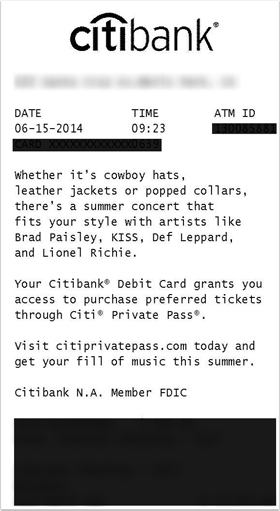Transactional mail
- laura
- October 1, 2015
- Best practices
 There are a lot of myths in the email space. Things that someone, somewhere said and another person repeated and then another person repeated and all of a sudden it is TRUTH. One of those things is the idea that there is a law defining what can be in a transactional email. Supposedly this law says that 80% of the message must be transactional content while 20% of the mail can be promotional content.
There are a lot of myths in the email space. Things that someone, somewhere said and another person repeated and then another person repeated and all of a sudden it is TRUTH. One of those things is the idea that there is a law defining what can be in a transactional email. Supposedly this law says that 80% of the message must be transactional content while 20% of the mail can be promotional content.
This isn’t really a law. I was even going to say it’s kinda a good idea, but then I stared thinking about it. It doesn’t even really make sense. 80% of what? Size? Space? Bytes? Layout? Do headers count in the 80% or just what’s visible? Does the HTML code count? What makes for “new” content?
Adding promotional content to receipts is great for conversions. It’s a great way to get someone to opt-in to mail. It’s a great way to upsell. It’s great for engagement; that makes it good for deliverability. Senders should include some level of promotional mail in receipts whenever possible.
There are some guidelines I suggest when looking at transactional mail.
- Decide what format is right for you. Do you want to send .pdfs? HTML mails? Plain text? All of them have their pros and cons, so make an informed decision about which you want.
- Make the transaction bit easy for the recipient to see. Give them the data they want where they can find it.
- Pay attention to how it might print. Airlines do a pretty decent job at this, but almost every other group fails. Drives me nuts when I’m compiling receipts for the bookkeeper and I have to print 2 or 3 pages to get the full receipt.
- Invite the user to opt-in to newsletters and more mail. They’re engaged with you now, capture that. Even better, if they click on the opt-in link in the transactional mail you now have a confirmed address.
- If you’re going to automatically add transactional recipients to marketing lists, track engagement separately. If you mail a transactional address multiple times and there’s no engagement, maybe you should take it off your primary list and put it into a different mainstream.
Transactional mail is great for everyone involved. It gives recipients what they want, it gives companies a chance for personalized touch. Well designed transactional mail improves deliverability and engagement.
 One of the things our bank does that I really like is send ATM receipts directly to the email address associated with the ATM card. No more random pieces of paper I have to track down, it’s all there in my mailbox. This week I noticed that the bank is leveraging the transactional mail to tell me about new services they provide.
One of the things our bank does that I really like is send ATM receipts directly to the email address associated with the ATM card. No more random pieces of paper I have to track down, it’s all there in my mailbox. This week I noticed that the bank is leveraging the transactional mail to tell me about new services they provide.